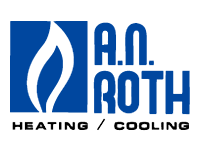Renovating your historic home? Consider your HVAC system FIRST.
Renovating a historic home is a commonplace occurrence. What is not commonplace is considering the “thermal envelope” of the historic home BEFORE renovations occur.
What exactly is a “thermal envelope”?
A thermal envelope includes everything on a house that shields the interior from the exterior elements: exterior walls, doors, windows. All of these elements contribute to having either a tight thermal envelope (good) or a loose thermal envelope (bad). A tight thermal envelope has little heating or cooling loss; a loose thermal envelope includes drafts and discomfort.
That being said, it’s important to consider that older homes were built during times when central heating and air were rudimentary or, in many cases, non-existent. Present day, we demand certain amenities that might be difficult to achieve in an older home. The major amenity we desire is a perfectly controlled indoor climate, no matter what the weather conditions or temperature is outside.
It is necessary to determine how to attain this ideal level of interior comfort before you renovate.
Here are some important considerations before renovation:
Find the Breaches in your Thermal Envelope
This involves doing a blower door test to find the breaches from the attic to the basement. This test determines where the leaks exist so that the house can be shored up, tightening the thermal envelope. Fixes include installing energy efficient/weatherproof doors and windows, enhancing insulation and adding air sealing to your house.
A common breach involves the Stack Effect (read our blog about this here), which is a very real problem in many of these historic homes. Essentially, this is the way air moves in and out of a building. Warm air rises, going out of the top of the house in the winter. While the warm air is moving out the top, cold air is pulled in through the lower floors. The summer brings the opposite effect: cold air falls to the bottom floors while hot air is sucked in through the upper floors.
2. Ductwork
As we stated before, historic homes were built during a time when central heating and air was not the norm. As a result, the ductwork in these homes can be too small, old and even leaky. Assessing the viability of your ducts before renovating is crucial to the future comfort of your home. A new HVAC system cannot operate with a faulty delivery system. Your HVAC professional can determine if your current ductwork can be salvaged, modified or if it needs to be replaced.
3. Furnace/Air Conditioner Size
After addressing all breaches to the thermal envelope, the homeowner needs to determine if the HVAC system is an adequate size to comfortably regulate the temperature in the house. Is it too small? Too large? A professional will be able to determine the best size for your house and your needs.
By prioritizing your comfort in your new space with the help of a HVAC specialist, you can stave off future problems that are hard to remedy once construction is complete.
At A.N. Roth Heating and Cooling, the most common problem they see is that they are not asked to get involved with a renovation until AFTER there are comfort issues. General Manager Richard Roth advises that if you don’t address your air sealing and balances before your renovation, “no air conditioner can help you.”
It is difficult to achieve a perfect “new construction” feel in an older home with respect to comfort levels. But with attention to ventilation and temperature which involves improving insulation, making your home energy efficient and air sealing throughout the space, an ideal temperature can be achieved and you can thoroughly enjoy your newly renovated space.


